What is Jantar Mantar? It is a historical astrological monument in Jaipur, Rajasthan. This monument was built in 1738. The site is a collection of 19 historic structures.
Also there are 17 other substructures. Thus, making a total of 35 structures. These structures allow observers to calculate astrological positions with naked eye.
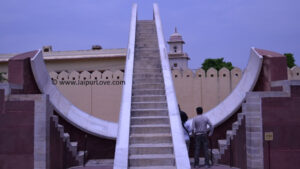
Where is Jantar Mantar?
It is situated in the heart of Jaipur city across a street from City palace. The whole compound area is called Jaleb Chowk.
Also read: Samsung Service Centers in Jaipur
Jantar Mantar Jaipur History
Sawai Jai SIngh ll laid the foundation of Jantar Mantar in 1718 AD and the construction continued for 16 years. Eventually in 1734 AD it was completed.
Question – Who built Jantar Mantar?
Answer – Sawai Jai Singh ll built Jantar Mantar Observatory.
Must read: Tourists Places in Jaipur
Why was Jantar Mantar built?
Sawai Jai Singh ll witnessed a heated discussion in the court of Mughal emperor Muhammad Shah in 1718 AD. The argument was about calculating an auspicious date when the emperor could start a journey. For this reason he built observatories at 5 places:
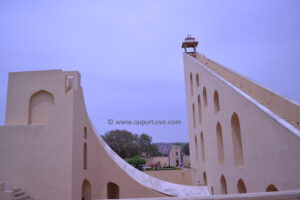
- Delhi
- Mathura
- Ujjain
- Benares
- Jaipur
These observatories would help in calculating more precise readings of movement of sun, stars, planets and moon.
Also read:
Henceforth it would help in making astronomical calculations and predictions of solar or lunar eclipses. This was a benchmark amalgamation of religion and science in that era.
What does Jantar Mantar means?
Jantar in Sanskrit means instrument or machine. The origin of word Jantar is a Sanskrit word Yantra. Yantra means instrument or machine. Mantar is derived from Sanskrit word Mantra or Mantrana which means consultation or calculation. Thus, Jantar Mantar means Calculating instruments.
Also read: Jaipur Masala Chowk
Construction
Structures or Yantras in observatory are made of stone masonry. These are plastered with lime.

Some instruments are built using marble and polished for better finishing and precision. Certain parts of structures are made of astronomical metal scales and filled with lead for precise calculations.
Interesting Jantar Mantar Jaipur Facts
- This monument is protected & maintained by Archaeological Survey of India.
- The Samrat Yantra is world’s largest sundial with height of 27 meters.
- The Samrat Yantra sundial is precise up to 3 seconds
- An amount of 100000-150000 Indian Rupees were spent on its construction in 18th century
UNESCO has given Jantar Mantar the status of World Heritage Site
List of structures/instruments in Jantar Mantar Jaipur
At the present time there are 19 structures in the observatory. To summarise here is the list with their functions:
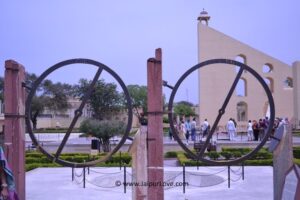
| Instrument's Name | Function |
|---|---|
| Brihat or Samrat Yantra | To tell time during day or night |
| Sasthamsa Yantra | To calculate Sun's distance and Zenith destance |
| Jai Prakash Yantra | To observe night time |
| Small Ram Yantra | Also to observe night time |
| Dhruva Darsaka Yantra | To show the pole star |
| Nadivalaya Yantra | To observe solar time |
| Horizontal Sundial atop Madivalaya Yantra | Horizontal sundial to observe time |
| Krantivritta Yantra | To function as Torquetum |
| Krantivritta ll Yantra | To measure celestial latitude and longitude |
| Daleshinottara Bhitti Yantra | To calculate altitude of a celestial object |
| Yantra Raj | To measure altitude, Zenith distance, local time, declination on longitude |
| Chakra Yantra | To calculate declination of celestial objects |
| Digamsa Yantra | To calculate angle of a zimuth |
| Unnathamsa Yantra | To calculate altitude of a celestial body |
| Rasivalaya Yantra | To calculate latitude of a celestial object |
| Kapala Yantra | To calculate local time and coordinates of the sun |
| Laghu Samrat Yantra | To measure time |
| Disha Yantra | Unknown |
Historical Significance
The observatory was a result of culmination of principles of observational astronomy from various cultures. Jai Singh ll studied models of:
- Maragheh
- Ulugh Beg’s observatory at Samarkand
- European literature about instrumental astrology
- Ancient Sanskrit scriptures.
He contributed Zij-i Muhammad Shahi by observations made at these observatories. Jaipur became a Mecca for astrologers from around the country after the establishment of Jantar Mantar. Astronomers and astrologers would come to Jaipur to study and discuss their views.
Significance in Modern World
In fact some instruments are in working condition till today. The site attracts tourists from around the world. On the full moon day of Ashada month local astronomers gather at the Jantar Mantar so as to perform religious rites. They also predict monsoon rains in the radius of 100 kms.
Also read: Jaipur to Vaishno Devi Flight
Sound and Light Show
The Sound and Light show is a tribute to Jai Singh ll. For this reason it uses lighting, graphics and animations for storytelling. Timings for Sound and Light Show are:
| Month | English | Hindi |
|---|---|---|
| October - February | 6:30 PM | 7:30 PM |
| March - April | 7:00 PM | 8:00 PM |
| May - September | 7:30 PM | 8:30 PM |
The show duration is for 45 mins.

Jantar Mantar Jaipur Timings
The monument is open for tourists everyday from 9 AM in morning to 4:30 PM in the evening.
Jantar Mantar Jaipur Ticket Price
Ticket price are 40 Rs for Indian and 200 Rs for Foreigner (per person).
In case you are carrying a still or video camera additional charges are applicable.
Nearby attractions
The monument is situated in the center of tourism activities in Jaipur. In brief here is a list of some equally important places of interest around it. In other words, Jantar Mantar nearby places.
- City Palace (50 Yards)
- Hawamahal (1.1 Kms)
- Sargasuli (450 meters)
- Albert Hall (2.6 Kms)
- Kalki Temple (500 Meters)
How to reach Jantar Mantar Jaipur?
The site is well connected to every part of town by buses, cabs, taxis, autos & e-rickshaws. Buses drop in the market 350 meters far from Jantar Mantar therefore, visitors can hire an e-rickshaw or walk up to the site.
- Airport – Jaipur International Airport (12.3 Kms)
- Railway Station – Jaipur Railway Station (5.2 Kms)
- Bus Stand – Sindhi Camp Bus Stand, Jaipur (2.7 Kms)
- Metro Station – Chandpole Metro Station (2.1 Kms)
Was it interesting and helpful read? Do share it with your friends online and give us a like on Facebook.

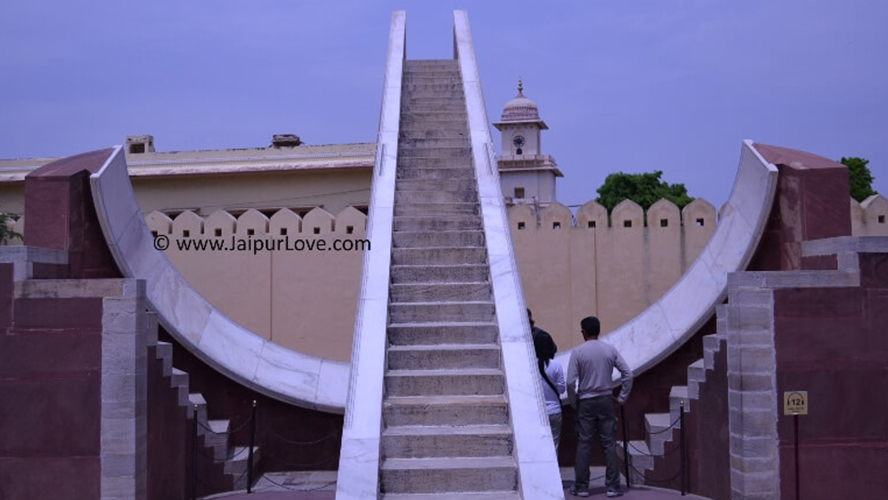

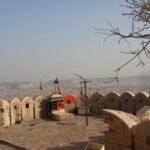
Alok Kumar 29 May 2018
Dear Prateek Harshwal:
Thank you for posting information about the Jantar Mantar and other sites of Jaipur. I plan to visit the place in July to make 20-25 short documentary films on sites that are rich in science and technology. These documentaries will be for 5 – 10 minutes each. Being an outsider, I am looking for ideas. I would appreciate your input.
Also, it would be nice to meet with you in person, if possible.
I am a professor at the State University of New York at Oswego and interested in Indian sciences. You can learn more about me from my website listed below. Best wishes,
Alok Kumar
Prateek Harshwal 29 May 2018
Namaste Alok Sir. I will be writing to you on your email soon. It will be a privilege for me to meet you.
Regards
Nancee Champion 22 Nov 2018
This is the best thing I’ve read on Jantar Mantar Jaipur. Kudos to your team and appreciate these efforts you put for travellers, especially from outside India.
Pawan 25 Nov 2018
Hey Nancee, thank you for sharing feedback. Our aim is to provide all needed info on Jantar Mantar Jaipur and we’re glad that we achieved it. 🙂 Keep exploring.
Monika Singh 8 Dec 2018
It’s important to visit Jantar Mantar in the morning hour. I’ve heard about this. Is it true or I can visit any time?
Zareen 10 Jan 2019
Jantar Mantar of Jaipur was an exciting trip. Only bad thing was the heat as I visited in May. Will recommend visiting the city during winter.
Pawan 11 Jan 2019
You are right about the best time to visit Jaipur and places like Jantar Mantar.
arif khan 12 Sep 2023
Well Explained Keep it up.
Arif Khan 27 Jan 2025
Entry fee for Indians is INR 5 and for foreigners, it is INR 100. 4. INR 25 is charged for video filming.